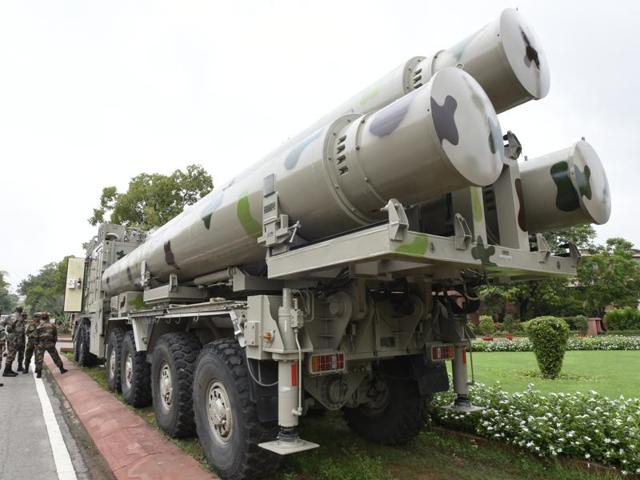SOURCE: AFI


On the night of May 9–10, 2025, the Indian Air Force (IAF) executed one of the most audacious and technologically advanced military operations in South Asian history, dubbed Operation Sindoor. In a retaliatory strike following a Pakistan-backed terror attack in Pahalgam on April 22, India unleashed a barrage of 15 BrahMos supersonic cruise missiles, launched from both land-based systems and air-based assets, targeting 12 Pakistani Air Force (PAF) bases.
The operation crippled Pakistan’s air defenses and dealt a severe blow to its air operational capabilities, with at least four missiles striking the strategically vital Bholari airbase. The use of decoy “dummy” aircraft, alongside precision munitions like the Crystal Maze and Scalp missiles, showcased India’s tactical brilliance and marked the first combat deployment of the BrahMos missile system.
On the intervening night of May 9–10, Pakistan launched ballistic missiles and drones targeting 26 locations across India, including civilian infrastructure. India’s air defense systems, including the S-400, MRSAM, and Akash units, thwarted most of these attacks. In response, India’s political and military leadership, led by Prime Minister Narendra Modi, greenlit a massive counteroffensive aimed at neutralizing Pakistan’s air capabilities and raising the cost of its aggression.
With Pakistan’s air defenses compromised, the IAF launched a multi-pronged assault using a combination of BrahMos supersonic cruise missiles, Scalp air-launched cruise missiles, Crystal Maze ballistic missiles, and other precision-guided munitions like HAMMER and Rampage. The BrahMos, a joint India-Russia venture, was the centerpiece of the operation, with approximately 15 missiles fired from both land-based launchers and Sukhoi-30MKI fighters modified to carry the air-launched variant (BrahMos-A).
The BrahMos Barrage: Targeting 12 Airbases
The BrahMos missiles, known for their Mach 2.8–3.0 speed, 450–800 km range, and pinpoint accuracy, were used to devastating effect. Launched from Western and Southwestern Air Commands, the missiles struck 11 out of 12 targeted PAF airbases, effectively paralyzing Pakistan’s air operations. The targeted bases included:
- Nur Khan (Chaklala, Rawalpindi): A key operational hub near Pakistan’s Strategic Plans Division, sustaining significant infrastructure damage.
- Rafiqui (Shorkot, Punjab): Home to fighter squadrons, its runways and hangars were heavily damaged.
- Murid (Chakwal, Punjab): A forward-operating base critical for air defense, neutralized by precision strikes.
- Sukkur (Bholari, Sindh): A dual-use naval and airbase near Karachi, hit by at least four BrahMos missiles.
- Rahim Yar Khan (Punjab): A southern base, its command centers were obliterated.
- Chunian (Kasur, Punjab): Runways and shelters were destroyed, limiting PAF operations.
- Sialkot (Punjab): Radar installations were targeted, blinding Pakistan’s situational awareness.
- Pasrur (Punjab): Precision strikes demolished radar and control systems.
- Sargodha (Punjab): A major F-16 hub, its infrastructure was extensively damaged.
- Jacobabad (Sindh): Home to the No. 5 Squadron (F-16s), its hangars and control tower sustained critical hits.
- Skardu (Baltistan): A high-altitude base, its operational capacity was severely degraded.
The Bholari airbase, one of Pakistan’s newest and most ambitious installations, was particularly hard-hit. At least four BrahMos missiles struck the base, destroying hangars, runways, and support infrastructure. As a dual-use facility with naval and air roles, Bholari’s neutralization compromised Pakistan’s southern force projection and left Karachi vulnerable to further strikes. Satellite imagery revealed craters and collapsed structures, underscoring the precision and destructive power of the BrahMos.
The IAF’s Sukhoi-30MKI fighters played a pivotal role, launching air-launched BrahMos-A missiles from standoff distances without crossing the Line of Control or international border. Around 40 Su-30MKIs have been modified to carry the BrahMos, which has a range extended from 290 km to 450–800 km. The missiles’ low-altitude flight profile and supersonic speed made them nearly impossible to intercept, even by advanced air defense systems.
Complementing the BrahMos, Rafale fighters deployed Scalp cruise missiles and HAMMER precision-guided munitions, while Crystal Maze ballistic missiles targeted hardened shelters and command centers. The combination of these weapons ensured comprehensive destruction of critical infrastructure, including runways, hangars, and radar sites, across the targeted airbases.
The strikes had a profound impact on Pakistan’s military capabilities. The PAF was forced to relocate surviving aircraft to rear bases, and sources reported the loss of high-value assets, including long-endurance UAVs and an airborne early warning and control aircraft in a hangar in Sindh. The destruction of radar sites at Pasrur, Sialkot, and Chunian blinded Pakistan’s air defense network, leaving it vulnerable to further strikes.
The intensity of the BrahMos-led offensive forced Pakistan to abandon plans for further retaliation. On May 10, Pakistan urgently sought a Director General of Military Operations (DGMO)-level meeting with India to propose a pause in hostilities. The operation’s success was attributed to meticulous planning, real-time intelligence, and the seamless integration of land- and air-based assets.
NOTE: AFI is a proud outsourced content creator partner of IDRW.ORG. All content created by AFI is the sole property of AFI and is protected by copyright. AFI takes copyright infringement seriously and will pursue all legal options available to protect its content.